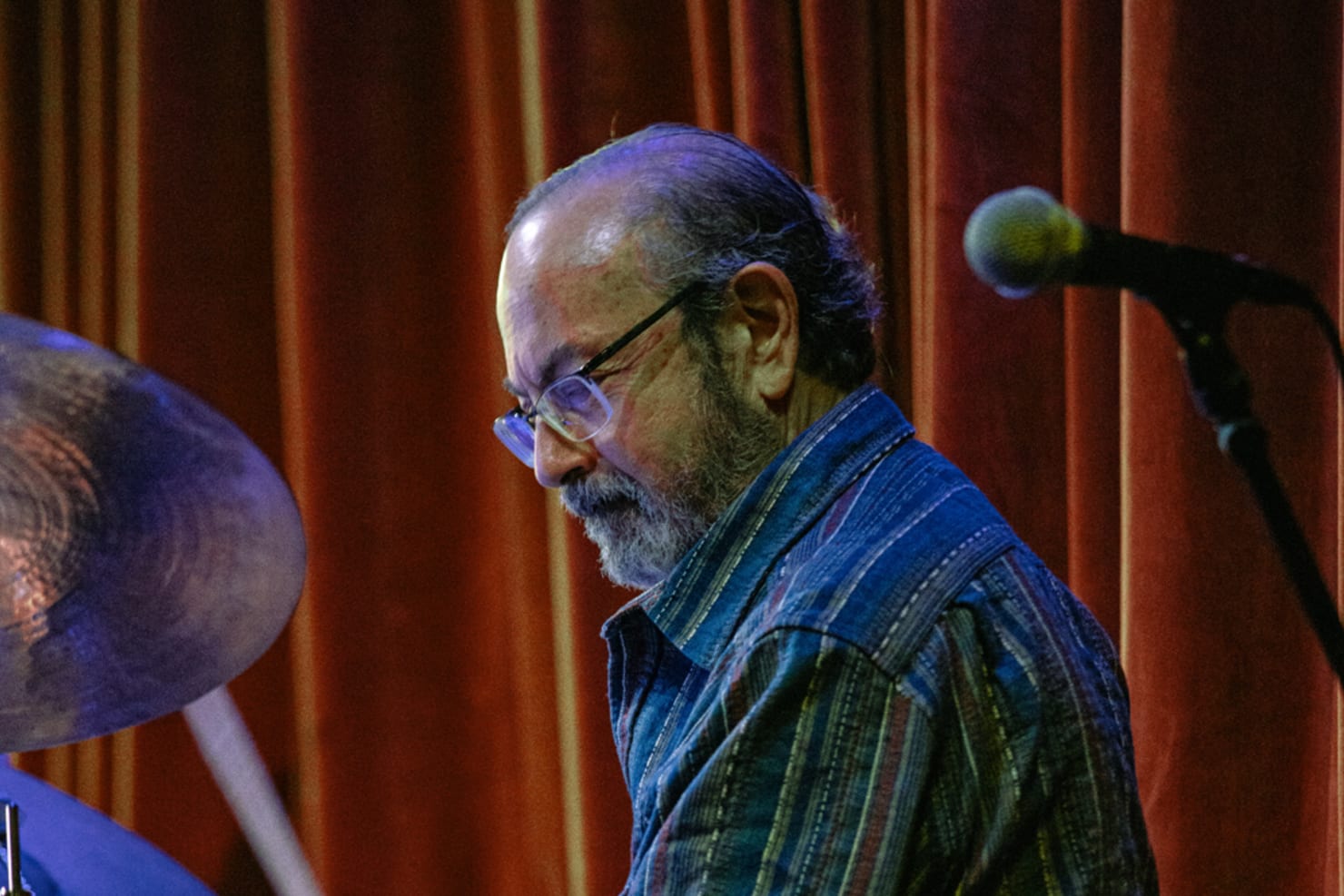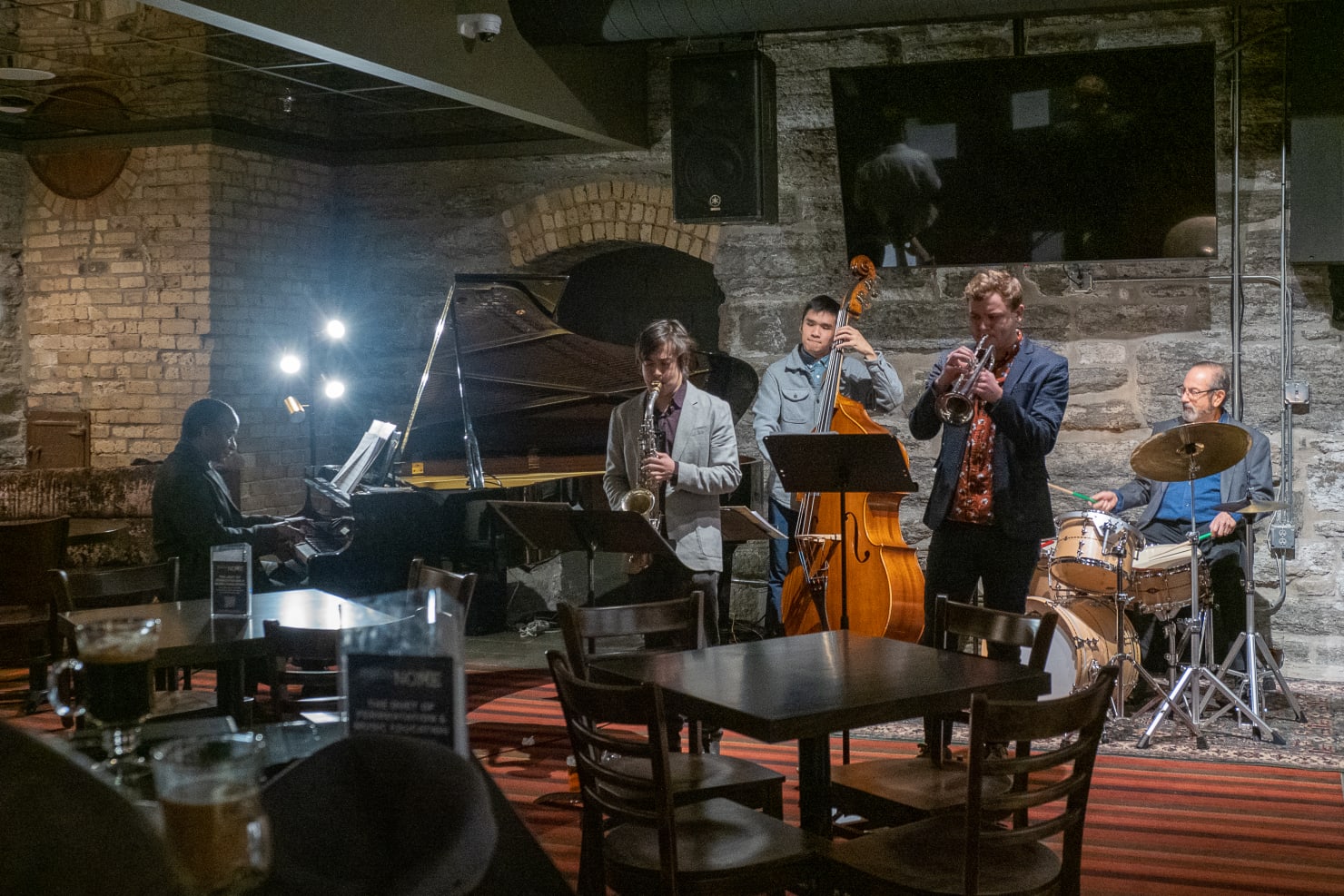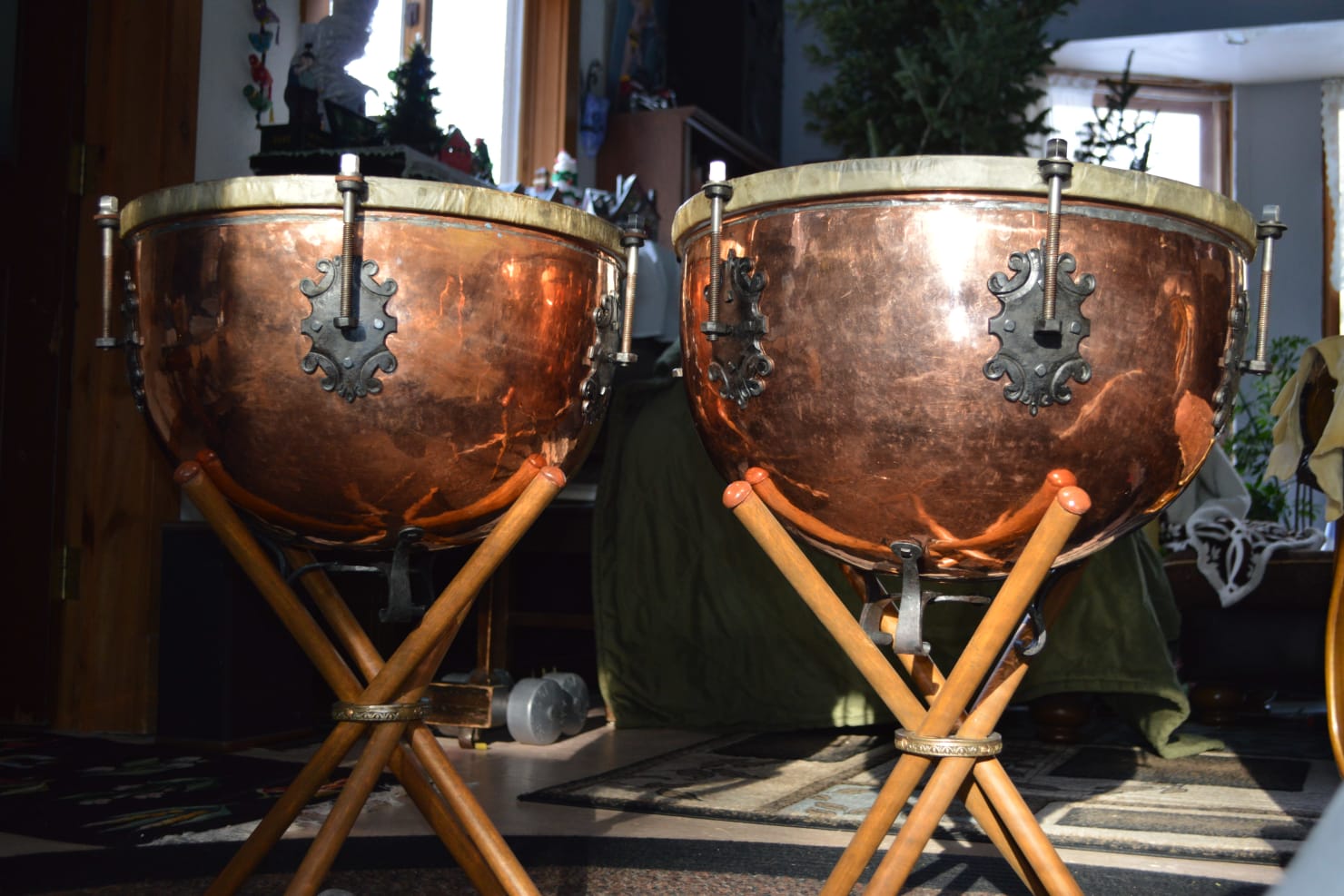Retired Musicians Spotlight

Each year a handful of Minnesota Orchestra musicians enter retirement, often after decades of dedicated service to the ensemble. Along with well-earned time to relax and enjoy music in new ways, some take the opportunity to engage in new projects and hobbies. This spring we had the opportunity to catch up with four musicians who retired between 2012 and 2021—Janet Horvath, Peter Kogan, Marcia Peck and Julie Ayer—and hear about their current activities and reflections on their years in the ensemble.
Janet Horvath
Since retiring from the Minnesota Orchestra in 2012, Janet Horvath has shifted to a career primarily as an author, speaker and educator—roles she pursued during her 32 years as the Orchestra’s associate principal cello, but which have now become an even more prominent part of her life. Her new memoir The Cello Still Sings reflects on her life’s journey, including her career with the Orchestra, and on the stories of her parents—both professional musicians and Holocaust survivors—among them her father’s memories of performing under the direction of Leonard Bernstein.
“The book reads like a mystery story as I unravel the past,” Horvath explains. “I trace both my father’s professional cello playing career and my own, all the foibles of growing up, and the struggles to learn a musical instrument, told through humorous stories and vignettes as well as the very real history and trauma finally healed through music.” Horvath notes that Minnesota Orchestra audiences may find particular interest in her stories about auditioning for and touring with the ensemble, as well as a chapter on a transformative Orchestra program in 2005 at the Basilica featuring the world premiere of the late Stephen Paulus’ Holocaust memorial oratorio To Be Certain of the Dawn, concerts at which Horvath was called on as soloist in Max Bruch’s powerful Kol Nidre for cello and orchestra.
Horvath’s book, released at the end of February, is gaining acclaim and wide attention, including a coveted starred review from Kirkus Reviews, which noted that “In a world in which antisemitism is on the rise, Horvath’s story—equal parts disturbing and inspiring—is necessary and timely reading” and called the book and “A poetic, nuanced tribute to the power of music and family.” The Pioneer Press stated that “Horvath tells her story beautifully…[and] is especially adept at explaining the beauty of the music she’s discussing,” and deemed the book “a must-read for those who want to understand children of survivors.” Additional coverage has come from outlets such as The Strad, Jewish Book World, Minnesota’s FOX 9 Minneapolis-St. Paul and A Mighty Blaze. Phillip Gainsley, who regularly hosts the Minnesota Orchestra’s pre-concert discussions, has interviewed Horvath on his podcast Let’s Talk Music.
Over the past few months Horvath has been giving numerous presentations about her book, from Minneapolis to Chicago to Toronto, and will next visit North Carolina. Minnesota Orchestra audiences can hear her discuss the book in pre-concert presentations at Orchestra Hall before the June 8 and 9 concerts; other information about the book and her events, including an event at Temple Israel on June 23 and a book signing at Barnes & Noble at Greenway Lakes Commons in Minneapolis on July 1, is available at janethorvath.com.

Peter Kogan
When Peter Kogan retired from the Minnesota Orchestra in 2015 after 29 years as principal timpani, his musical career entered a new phase—one that has brought several passions from his younger years to the fore: jazz, composition and drum set. In the past decade he has recorded and released four albums of his original music, most recently last year’s Just Before Midnight, and has performed regularly on drum set with an array of top jazz talents including his own septet, the Monsterful Wonderband, while still keeping a foot in the classical and timpani world. His newest project is curating and performing in a monthly jazz concert series, PeterKoganJazzPresents, held on the third Thursday of each month at MetroNOME Brewery in St. Paul.
Kogan’s interest in jazz extends to his junior high and high school years, when he attended a summer music camp and was introduced to bebop and improvisation by Chuck Israels, and made trips to New York City jazz clubs with friends, including a memorable visit at age 15 to the famous Birdland Jazz Club to hear Count Basie. His formal musical studies at Juilliard and the Cleveland Institute of Music, however, were more classical-focused and narrowed to an instrument not typically found in the jazz world—the timpani. His early career included positions in the Cleveland Orchestra and Pittsburgh Symphony, a six-year foray back into the New York City freelance drum set world, and an eventual return to the orchestral profession in the Honolulu Symphony and Minnesota Orchestra.
Kogan’s arrival in Minnesota in 1986 marked the end of one chapter in his musical life. “Basically I set aside drum set for quite a number of years. I had it in my basement, but barely touched it,” he says. His interest resurged 15 years ago when Orchestra trumpet player Charles Lazarus recruited him to play drum set for a presentation in Naples, Florida, at a time when the Orchestra’s percussionists who play drum set more regularly were unavailable. “I had such a good time, and I was so high on it,” Kogan recalls. After returning home, he worked with Lazarus to continue the jazz collaborations and bring more musicians into the mix. “I started writing again, and having people come over to my house to play. That led to my first album, which was released in 2013, and featured Chuck and [Orchestra bass player] Dave Williamson. And then it became pretty clear what I was going to do when I retired.”
Kogan chose to bow out from the Orchestra in 2015 after the conclusion of its Grammy Award-winning Jean Sibelius symphonies recording project under Osmo Vänskä’s direction. His classical music and timpani skills are still in frequent use, though: in recent years he has played timpani with a focus on early music, appearing often with the Lyra Baroque Orchestra, and he builds and sells sets of timpani in the Baroque- and Classical-era styles, crafted to match the design, sound and performance practices of repertoire from those periods. Kogan’s website Peter Kogan Timpani details his instrument-building endeavors.
Kogan’s ongoing engagement at MetroNOME Brewery, which has become a hot spot for local and national performers, originated last June when his quintet played there as part of the Twin Cities Jazz Fest and the venue’s co-owner, conductor-pianist William Eddins, invited him to return monthly. Eddins, a former associate conductor of the Minnesota Orchestra, is the broadcast host for the Orchestra’s June 23 performance celebrating Juneteenth on its This Is Minnesota Orchestra TV and livestream series. Each month’s PeterKoganJazzPresents performance brings a new slate of musicians, sometimes united just for that performance, and recent lineups have included a quartet headlined by saxophonist Brian Grivna, a “Brass Master Summit” featuring Lazarus and trombonist Scott Agster, and an appearance by Kogan’s Monsterful Wonderband. This month’s edition takes place on Thursday, June 15, beginning at 7 p.m.
Like much jazz music, Kogan’s career and busy retirement have included a mix of planning and improvisation, and what he calls the “wild ride” of his post-Minnesota Orchestra activities is sure to include many more wonderful and surprising adventures, with upcoming ones detailed at peterkoganmusic.com.
Marcia Peck
Marcia Peck holds a special distinction in Minnesota Orchestra history for the longest tenure of any musician—a 50-year span in the cello section that concluded in October 2021—but for many of those years, music wasn’t the only art form on her mind. Her longtime complementary career as a writer is now her primary focus, and her first novel, Water Music, was published last month by Sea Crow Press. Peck wrote the novel—set in 1956 and told through the eyes of a 11-year-old girl summering in Cape Cod with her family—over the course of a decade, working on it when the Orchestra’s schedule allowed.
“I’ve always been a reader, and putting something on paper seemed the perfect complement to life in a symphony orchestra,” says Peck. She explains that her writing life “snuck up” on her, beginning with her journaling after the birth of her daughter. In 2001 she received her first major award as a writer, a Minnesota State Arts Board Artist Fellowship, and two years later she was invited to represent the Minnesota Orchestra’s musicians by writing an introductory essay for a retrospective book marking the Orchestra’s centennial. Many other awards and accolades for her writing have followed, as well as a residency at the Illinois artist’s retreat Ragdale, and her articles, essays and short-form fiction have appeared in numerous publications including Musical America, Strad Magazine and New Millennium Writings.
The setting of Peck’s novel is familiar to her, as her family also spent summers in Cape Cod while she was growing up. The central character, Lily Grainger, is a budding cellist—“writers are advised to write what you know,” Peck acknowledges—but the book uses those personal elements as a starting point for an original story about family, music and the natural world, rather than an autobiographical one. “It was fun to inhabit the 11-year-old frame of reference while also allowing the adult to look over Lily’s shoulder,” says Peck. “Like her, I loved Cape Cod, and writing the book pushed me to go deep into that love. It felt like trying to find words for what it is that moves me about a Beethoven quartet or Mahler’s 10th Symphony.”
Peck sees further connections between music and storytelling—as well as some key distinctions. “Performing the great symphonic works over and over again, I couldn’t help but drink in a sense of a journey—that sense of story and inevitability,” she says. “But performance is frustratingly ephemeral.” Putting words to a page has given her another type of expressive outlet, one that readers can now hold in their hands after her years of dedicated work. More writing projects are already on her horizon, including a revision of another long-gestating novel about a stolen cello, as well as a memoir.
Although Water Music is set on the East Coast, Peck is quick to credit the success of her writing career to her home of over a half-century. “It’s all thanks to a wonderful, thriving and supportive writing community in Minnesota,” she says. She also reflects fondly on her career at Orchestra Hall, which she visits often—in the audience. “I miss the Orchestra, the repertoire, my colleagues and the feeling of family,” she says. “When I started 50 years ago, I had no idea how much it would all come to mean to me.”
Peck’s book is receiving early praise—author Carol Dines calls it a “wise, funny, and deeply moving novel...It is impossible not to love Lily and see ourselves in her struggles”—and is available now at many major online outlets, with a full list of sellers available via her website, marciapeck.com. A local in-person launch event will be held at Open Book in Minneapolis from 5 to 7 p.m. on Tuesday, June 20.

Julie Ayer
When the Minnesota Orchestra took the stage at Havana’s Teatro Nacional during the ensemble’s historic Cuba tour in May 2015, its ranks included several musicians who weren’t members at the time—among them violinist Julie Ayer, who was formerly assistant principal second violin. Ayer had retired in 2012 after 36 years in the Orchestra, but there were still more chapters to be written in her story with the ensemble. In the same way, the Orchestra’s own story is always being written, and Ayer has become one of its chroniclers through the release of a new book, Defying the Silence, her second work addressing labor relations in the American symphony orchestra world. Its subject is the Orchestra’s lockout of 2012-14 as well as the years that have followed, as the Orchestra has rebuilt, forged new collaborative models, enjoyed artistic triumphs and persevered during the pandemic.
Ayer’s interest in this area extends to the start of her performing career, which began with the Houston Symphony before her 1976 arrival in Minnesota—a state she still lives in for part of each year, splitting time between St. Paul and southern California with her husband Carl Nashan, who is also a former Minnesota Orchestra violinist. “I was ecstatic to be able to support myself in the career choice of a lifetime, with basic health care and other benefits,” Ayer recalls, “and I wondered how it all came about.” Her research into the history of collective bargaining in orchestras led to the 2005 release of her first book, More Than Meets the Ear: How Symphony Musicians Made Labor History. “There was no cohesive documentation of the real drama that transformed the lives of professional orchestra musicians,” she says. “I was determined to change that because I believe in documenting history and the wise words of Virginia Woolf: ‘Nothing has really happened until it has been recorded.’”
What Ayer calls the “same obsession” drove her to write Defying the Silence, subtitled A Chronicle of Resilience That Saved the World-Renowned Minnesota Orchestra, and document what she calls “a profound period of time for the Minnesota Orchestra and for the community” as well as the transformation of relationships that took place during that time. “Both books were a labor of love, and a tribute to the artistry of musicians and their crucial importance in our society and culture,” she adds. “The hard-fought gains and accomplishments of our predecessors are fragile and must be protected. The lockout threatened the very identity of the Orchestra, but also awakened the priorities of the community, and created incredible musician solidarity that should be a template for all other arts organizations faced with similar crises.”
A major component of Ayer’s book is the support of the community that has allowed the Orchestra to fulfill its musical mission across a decade when local and global events left the ensemble’s future and direction in question. “The generous grassroots support was a revelation of how important the community is to the musicians,” she says. “During the pandemic, the mission to keep the music alive was fulfilled, forged from the lessons of the lockout. The general feeling is that everyone is stronger as a result, but the struggles and trauma of the lockout cannot be forgotten.”
Alongside researching and writing, Ayer has found other rewarding activities during her retirement, split between Minnesota’s capital city and the Mediterranean climate of southern California in San Clemente. “My husband Carl retired from the Minnesota Orchestra many years before me, and very much wanted to escape Minnesota winters,” Ayer explains. “So eventually he found the ideal ‘garden cottage’ a few blocks from the Pacific Ocean. We both enjoy daily walks, road trips, growing water-wise flowers and plants—succulents, especially—and citrus trees that thrive in that climate. It is year-round outdoor living and we never take it for granted, having lived in Minnesota for our entire careers.” The results of the West Coast’s extraordinarily wet winter of 2022-23 are now evident in their garden, which has seen what she calls a “super-bloom” of California poppies.
Ayer has also found fulfillment in another type of art-making. “I have created several mosaic pieces because I was inspired by the Spanish Colonial Revival architecture and the mosaics seen everywhere in the area,” she says. Back in Minnesota, she keeps up musical ties—on more than just violin. “My beloved chamber music group, Classica Chamber Players, formerly Hill House Chamber Players, has continued to thrive, with performances mostly at Sundin Hall at Hamline University,” she says. “Occasionally I play viola for these concerts, and love the resonance of the inner voices.”
Ayer looks back fondly on her time with the Orchestra, naming the ensemble’s many tours as especially meaningful—and not just the Cuba visit that served as the postscript to her time in the ensemble, when more players were needed as the Orchestra worked to fill open positions after the lockout. “All foreign tours are significant, but I would include Hong Kong and Australia in the 1980s, and then in 1998 the first European tour after many years of absence on the stages of Europe. The Sydney Opera House is another highlight. Carnegie Hall is hallowed ground for all musicians because of its historical significance. The finest authors, musicians of every genre, humorists and politicians have graced the stage since 1891, and it was always an honor to perform there.” She also names a standout memory back at Orchestra Hall: working with conductor Klaus Tennstedt. “That was one of the musical highlights of my career,” she says. “Even in rehearsals we played with 110 percent intensity, because he demanded it of us and himself. It was unforgettable and transcendent—and post-concert ping-pong games were just as intense!”
Ayer’s passion for orchestral music and her interest in the collective efforts that make it possible—both on and off the stage—have produced a memorable career as well as two important books stemming from her unique insider’s view. “Although I miss playing great music with my colleagues, I am enriched by listening in a different way and gaining a different perspective,” she says. “I will always miss my colleagues and lifelong friends, their artistry, and the easy camaraderie we share. Music is my lifeblood and will always inspire and move me.”
Defying the Silence can be purchased online at Amazon, and will be available at several upcoming events at Twin Cities breweries: Boom Island Brewery on June 12, from 3-5 p.m.; Sociable Cider Werks, on June 15, 2023, from 5-8 p.m.; and MetroNOME Brewery, on June 20, beginning at 6:30 p.m. More information is available at Ayer’s website, julierayer.com.








